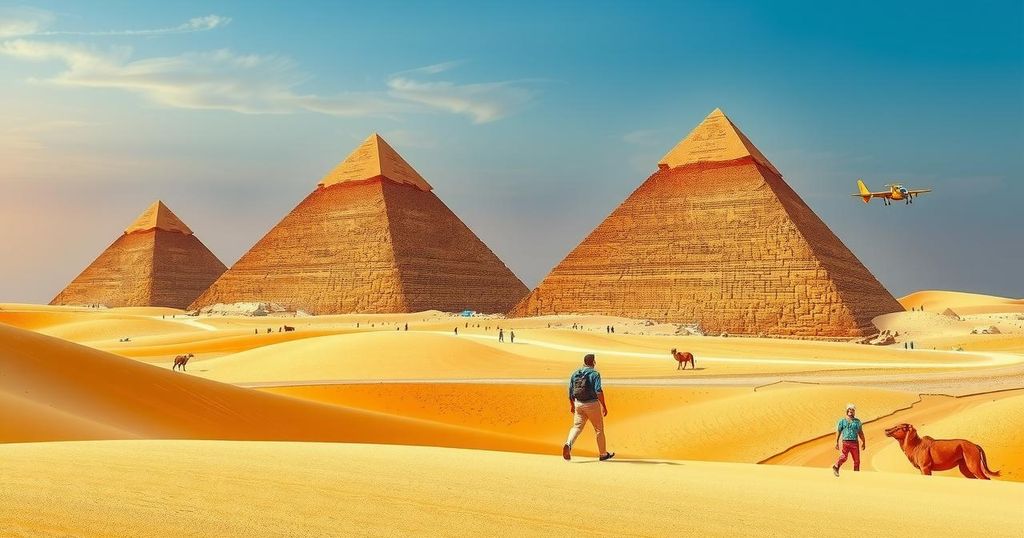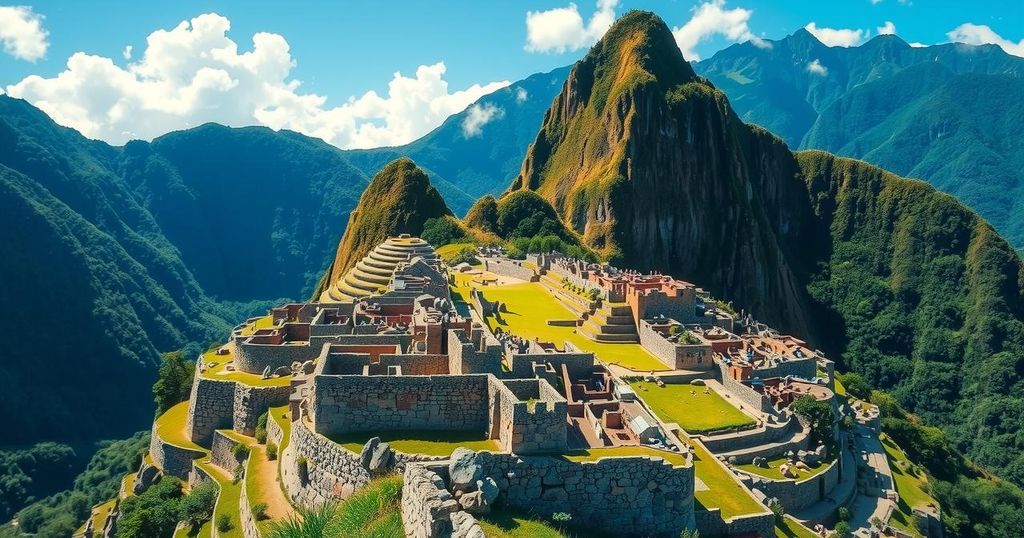Technology
AFRICA, ARCHAEOLOGY, CHRISTOPHER DUNN, CO, CORRADO MALANGA, EGYPT, ENVIRONMENTAL IMPACT, FILIPPO BIONDI, GIZA, GIZA PLATEAU, GIZA POWER PLANT, KHAFR, KHAFRE, KHAFRE PYRAMID, NEWS18, NIKOLA TESLA, POWER GRIDS, PYRAMID, PYRAMIDS OF GIZA, REESE, RESEARCH, ROMAN EMPIRE, SCIENCE, TECHNOLOGY, TESLA, UNIVERSITY OF PISA, UNIVERSITY OF STRATH, UNIVERSITY OF STRATHCLYDE
Jamal Walker
0 Comments
Discovery of Vast Underground Complex Challenges Views on Giza Pyramids
Recent radar scans reveal a significant underground complex beneath the Pyramids of Giza, suggesting functions beyond burial sites. This discovery includes a two-kilometer subterranean system with geometric pathways and large cube-shaped structures. The findings challenge traditional beliefs about the pyramids and align with various theories regarding their potential energy-related purposes. The Khafre Project team seeks further excavation, though approval remains uncertain.
Recent radar scans have unveiled a substantial underground complex beneath the Pyramids of Giza, prompting a reevaluation of their historical function beyond burial sites for Pharaohs. This study, led by scientists Corrado Malanga (University of Pisa) and Filippo Biondi (University of Strathclyde), employed Synthetic Aperture Radar (SAR) tomography, revealing an extensive subterranean system extending nearly two kilometers beneath the three pyramids.
Focused on the Khafre Pyramid, the researchers identified five identical structures at its base, featuring multiple levels interconnected by geometric pathways. Below these pathways are eight vertical cylindrical wells surrounded by spiraling passages that extend downwards to a depth of 648 meters, converging into two large cube-shaped structures measuring 80 meters per side.
The findings challenge the long-standing perspective that the pyramids primarily served as royal tombs. A video from the Reese Report highlights that many researchers suggest the underground network could have operated as a mechanical or energy-related system. This aligns with the theories of notable inventors like Nikola Tesla, who posited that the pyramids might harness Earth’s natural energy, and Christopher Dunn, who argued in his publication “The Giza Power Plant” that the Great Pyramid was a machine converting vibrations into usable energy.
While mainstream Egyptologists uphold that the pyramids were constructed around 2500 BCE using traditional methods, the newly discovered structures combined with mathematical variances in the pyramids’ design have sparked discussions regarding their actual purpose. The team behind the Khafre Project is eager to conduct excavation to explore these findings further, though obtaining the necessary approvals for such efforts remains uncertain due to Egypt’s historical restrictions on archaeological investigations that contradict established narratives.
The radar scans have unveiled a previously unknown underground complex beneath the Pyramids of Giza, suggesting functions beyond those of traditional royal tombs. The findings fuel debate regarding the true purpose of these structures and their potential as energy-related systems, echoing theories from historical figures like Tesla and Dunn. Amid controversies over excavations, the quest for understanding the pyramids’ true significance continues.
Original Source: www.news18.com




Post Comment